
The geophysics group at the University of Saskatchewan, Sam Butler, Igor Morozov and Jim Merriam with seven graduate students, two technical support staff and emeriti, Don Gendzwill and Zoli Hajnal, are active in a number applied geophysics projects.
Prof. Sam Butler’s research involves modelling continuum geophysical systems over lengths scales ranging from planetary to those of rock pores. Recently, Sam has become interested in studying flows in porous media. He has investigated effects due to thermal and compositional buoyancy and transport rates of temperature and solutes and porous media in which melting and solidification take place leading to exchange of matter between the liquid and solid matrix. Sam also investigates porous systems in which the solid matrix itself can deform in a ductile manner leading to changes in porosity resulting from externally imposed stresses. Earth’s upper mantle beneath mid-ocean ridges deforms in this manner and the formation of shear bands through compaction are a possible mechanism for extracting large volumes of melt to form ocean crust at mid-ocean ridges. Figure 1a below shows the porosity field from a model with initially uniform porosity that was subjected to a right-lateral simple shear. Magenta arrows show the flow of interstitial fluid driven by buoyancy. More recently, Sam’s group has used its expertise in porous flow modeling to enter the field of digital rock property modeling. Starting with images of rock cores taken using X-ray tomography, the pore space is extracted and meshed and the Navier-Stokes equations describing fluid flow and Laplace’s equation describing electrical current flow are solved in the pore spaces in order to determine the permeability and formation factor of core samples. An example simulation showing stream lines of fluid flow through the rock pore space is shown in Figure 1b.
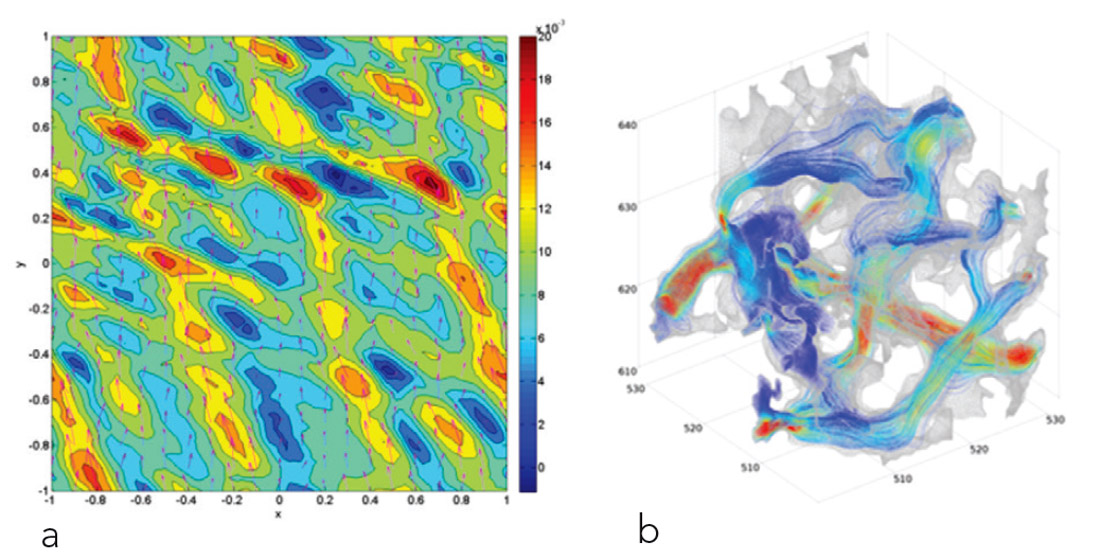
Sam’s group has also developed models of freely rotating fluid drops with surface tension. An example of a result of such a simulation, side by side with an imaged dumbbell tektite is shown in Figure 2a. The real tektite was imaged using a 3D laser scanning camera by Prof. Claire Samson’s group at Carleton University. The image was then meshed and an air flow simulation over the model tektite was carried out. Colors on Figure 2b indicate airflow induced pressure variations. Finally, Sam has become interested in modeling electrical and electromagnetic applied geophysics techniques, such as VLF and magnetometric resistivity.
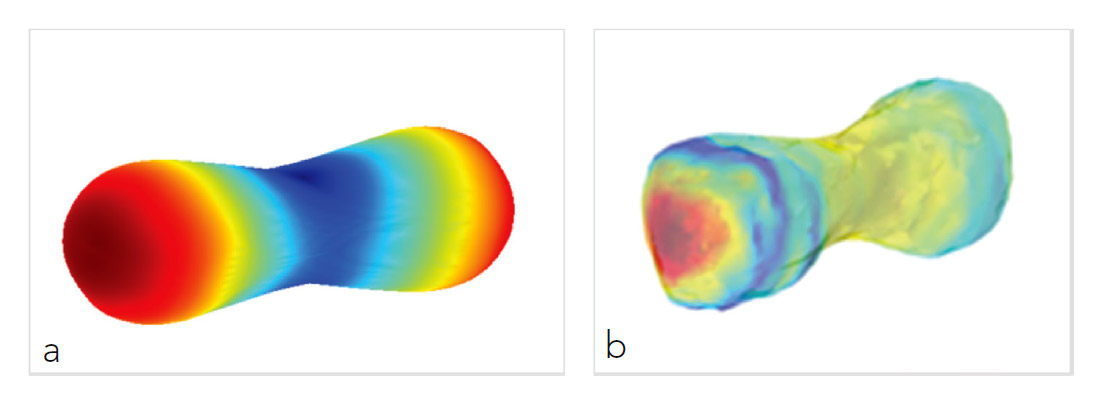
Three to six graduate students typically specialize in seismology (Igor Morozov’s group). Although relatively small, the seismology program is characterized by breadth and focus on fundamental subjects and advanced numerical methods. The key topic is controlled-source seismology that can be subdivided into several scales of imaging. First, at the longest scale, we analysed unique ultra-long profiles (over 3000 km) using nuclear explosions to image the upper mantle of the Earth and long-range crustal profiles (about 100-200-km long) profiles for imaging the deep crust and the Moho discontinuity. At shorter scales of the “exploration” domain, our students work with 3-D/3-C datasets looking to improve the imaging and time-lapse monitoring of CO2 injection. We have also conducted shallow refraction, reflection, rippabillity, and multichannel surface-wave analysis (MASW) studies. Along with controlled-source seismic studies, we are also study passive seismic methods, particularly in view of the recent growth of microseismic exploration. We currently maintain two seismographs for regional seismic monitoring.
Innovative methods for seismic data processing and analysis penetrate all of the above topics. Most notable among these methods are: a new, rigorous approach to P/SV elastic impedance, a simple yet accurate method for seismic impedance inversion, a new approach to the inversion for statics in 3D, and application of receiver functions to imaging the weathering zone. An ongoing, major methodological development offers a new view on seismic attenuation, which includes its physics, measurement, interpretation, modeling, and inversion. Seismic data processing and analysis software has also been a notable strength of our seismology program. To date, the in-house software is integrated in a powerful processing system combing nearly 300 tools for processing multicomponent seismic, potential-field, and well-log data, 3-D visualization, and a graphical user interface.
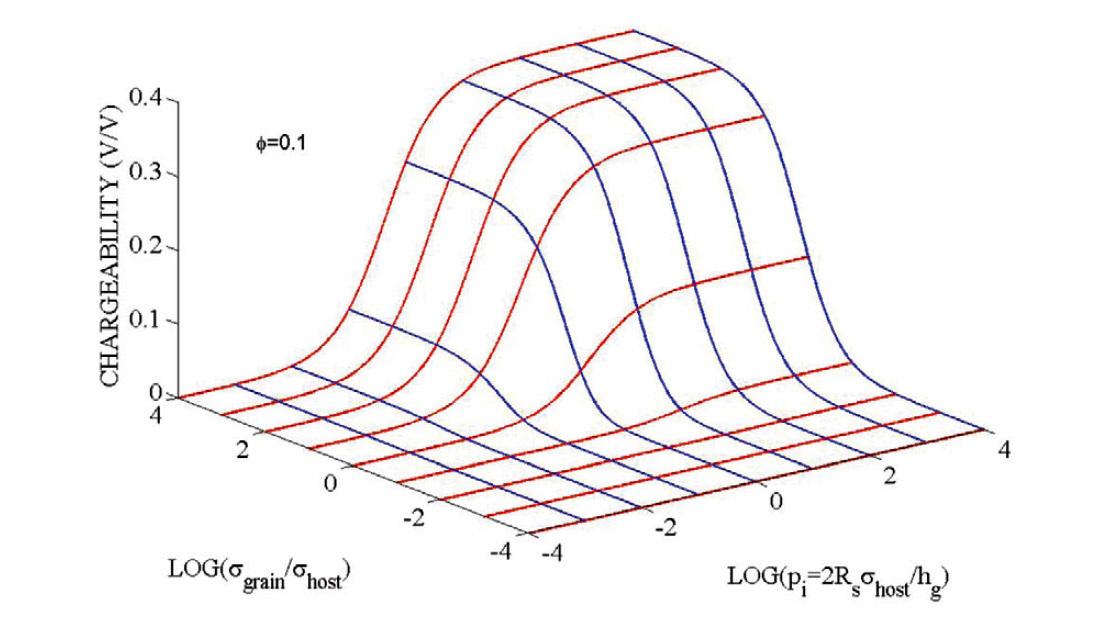
Jim Merriam focusses on electrical methods, especially induced polarization. Two graduate students are working in this area in collaboration with local mining companies. X.X.(Mary) Liang is optimizing electrode arrays for resistivity and IP surveys. Yu Han is interpreting a helicopter EM survey. The induced polarization work has resulted in a characterization of the polarization parameter space. The parameters that determine the chargeability are the ratio of intrinsic grain conductivity to host rock conductivity and a polarization index that depends on the surface resistance (the charge transfer resistance), the grain size and the host conductivity. Figure 3 is for a volume fraction of polarizable material of 0.1. Chargeability is divided into two regions, a broad plateau at the maximum chargeability for that volume fraction, separated by a transition over two decades from a region of zero chargeability. High intrinsic grain conductivity and surface resistance and small grain size favour chargeability near the maximum. Low intrinsic grain conductivity and surface resistance and large grain size favour low chargeability.






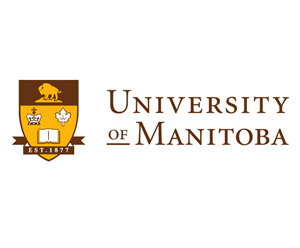
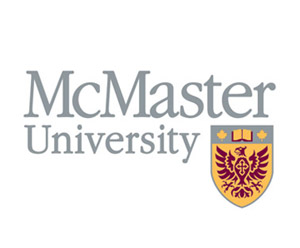
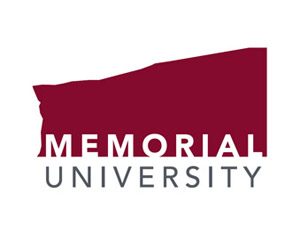






Join the Conversation
Interested in starting, or contributing to a conversation about an article or issue of the RECORDER? Join our CSEG LinkedIn Group.
Share This Article